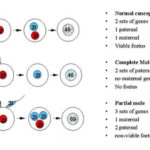
If you’re pregnant, you may have already found out about some of the annoying side effects. Weird pains in unexpected parts of the body, itching or skin problems can be bothersome, as the body you thought you knew so well suddenly behaves in a completely unexplainable way. Below are some of the most common discomforts during pregnancy.
Vaginal Discharge
You may notice more vaginal discharge than usual. If the discharge is milky and odorless or mild-smelling, it’s probably leukorrhea – nothing to worry about. There’s more discharge, partly because of increased estrogen production and greater blood flow to the vagina.
Gas and Bloating
As you may already know, during pregnancy you have much higher levels of the hormone progesterone. It relaxes smooth muscle tissue in your body including the gastrointestinal tract, and slows down your digestive processes, which can lead to gas, bloating, burping, and flatulence.
Bleeding Gums
Swollen, tender gums that bleed easily are also caused by higher progesterone levels and by an increased blood supply to your mouth. Both make your gums react more to the bacteria in plaque.
Constipation

A very common affliction. One reason is once again the hormone progesterone, which slows the movement of food through your digestive tract. The problem may grow worse later in pregnancy, when the growing uterus presses on your rectum.
Excessive Salivation
Some women salivate more than usual during pregnancy, especially when they’re nauseated.
Hemorrhoids
If you’ve suffered from hemorrhoids before pregnancy, you’re likely to have them again now. The problem may grow worse later in pregnancy. Fortunately, there are remedies for that condition, suppositories available on the market being the easiest solution.
Skin Problems
If you were prone to acne, you might find that pregnancy makes it worse. Pregnancy can also trigger acne if you had no such problem before. On the other hand, some women say that their acne disappeared during pregnancy, so, as with many other symptoms and conditions during pregnancy, you can never know.
Consult your caregiver before using medicated gels or lotions. A number of over-the-counter and prescription products may help, but not all of the ingredients are safe for use during pregnancy. If your condition is severe, consult a dermatologist.
Some women complain about cracked heels, especially in the third trimester. The condition may vary from mildly cracked and dry skin to deep, painful, bleeding cracks. If ointments, such as Flexitol, don’t help, consider consulting the podiatrist.
You might feel itchy, particularly around your growing belly and breasts, as your skin stretches to accommodate the growing baby and weight. If you suffered from dry skin, eczema or food allergies before pregnancy, they may affect you even more now. Some women complain of an unexplainable stinging sensation in the upper part of their belly, right under the breasts. You may also find that the skin of your belly is now sensitive to creams and lotions, and even your expensive cream may cause your skin to redden. Therefore, before you rub the cream on your belly, make sure there is no allergic reaction.
Nosebleeds
During pregnancy, the blood vessels in your nose can expand. The increased blood supply will put more pressure on those delicate vessels, which may cause them to rupture more easily.
Swollen Arms and Legs
You’re retaining more fluid during pregnancy, and changes in your blood chemistry cause some of it to shift into your tissue. As a result, you may have a certain amount of swelling.
Yeast Infection
It’s normal for women to have a certain amount of yeast in their vagina. However, during pregnancy, a higher level of estrogen makes it easier for yeast to grow. Yeast infections have no serious negative effect on pregnancy, but when yeast grows so fast that it overwhelms other microorganisms, it can cause significant discomfort for you, and if left untreated, the yeast infection can pass to your baby’s mouth during birth. The symptoms may include one or more of the following:
Copious amounts of discharge (white, greenish or yellowish, looks like cottage cheese and may smell like yeast/bread), red, itching, or irritated lips of the vagina and burning during urination or intercourse.
To prevent an infection and a recurring infection:
Wash your genital area regularly and thoroughly and wear cotton, breathable underwear. Avoid hygiene sprays, sanitary pads, tampons and toilet paper that contain colors or perfume. Limit sugar and refined flour products intake, as it promotes the growth of yeast, and include yogurt with lactobacillus acidophilus or a lactobacillus acidophilus supplement in your diet.
Heartburn
Heartburn is quite common during pregnancy. It affects many women in the second half of pregnancy, and usually comes and goes until delivery. The reason is the hormone progesterone, which relaxes the valve that separates the esophagus from the stomach, slowing down digestion and allowing gastric acids to seep back up, which causes heartburn.
To minimize the discomfort:
Avoid big meals and drinking large quantities of fluids during meals. Avoid acidic, spicy, fried and fatty foods, carbonated drinks; alcohol, caffeine, processed meats, mint products and smoking (which boosts stomach acidity). Don’t eat close to bedtime and sleep propped up with several pillows or a wedge.
An over-the-counter medication that contains magnesium or calcium may ease heartburn, but check with your prenatal caregiver before taking one, because some brands contain aluminum or aspirin or are high in sodium. If that doesn’t help, ask your caregiver for a safe heartburn medication.
Related: How to Keep Pregnant Women Away From Acid Reflux Dilemma?
Stretch Marks

Stretch marks can be pink, reddish brown, purple, or dark brown, depending on your skin color. About six to 12 months after childbirth, the marks fade considerably, but they’re here to stay. The marks appear most often on the abdomen in the later stages of pregnancy, but sometimes on the buttocks, thighs, hips, and breasts. They are caused by changes in the elastic supportive tissue that lies just beneath the skin. At least half of pregnant women get stretch marks, but no one can tell with certainty who’s going to get them and who won’t. However, if your mother or sister got stretch marks, you’re more likely to get them, too. In addition, you’re likely you are to develop stretch marks if you gain a lot of weight rapidly, carrying a big baby or multiples or have excess amniotic fluid.
What can you do to prevent stretch marks?
Unfortunately, there isn’t much you can do, unless gaining no more than the recommended amount of weight and gaining it slowly may reduce your chances of getting stretch marks.
There’s no proof that any of the creams, salves, and oils that claim to prevent stretch marks actually work, though they certainly won’t do any harm and will keep your skin moisturized. However, many of us use them anyway, thinking that if there’s any chance they work, why not? Hard to argue with that. So, if you want to use an anti-stretch marks product, make sure you use a quality product. Weleda products are highly popular, and they certainly contain quality ingredients, but there are many others. By the way, you can make a home-remedy for stretch marks all by yourself, combining, for example, wheat-germ oil, Shea butter, cocoa butter and Vitamin E.
Retin-A and glycolic acid may help. (Retin-A is not safe to use during pregnancy and there’s no reliable information on its effect on a nursing infant, so it’s best avoided while breastfeeding). Laser treatments can help restore the skin’s elasticity and also change the pigmentation so the stretch marks better match the rest of your skin.
Leg Cramps
Leg cramps may occur during your second trimester and may get worse as your pregnancy progresses. They can occur during the day, at night or morning.
To prevent leg cramps, avoid standing or sitting with your legs crossed for long periods of time. Stretch your calf muscles regularly during the day and before you go to bed. Do the same, carefully, before you get up in the morning. Take a walk every day, unless you have medical reasons to avoid exercise. Lie down on your left side whenever you can, to improve circulation to and from your legs. Drink water regularly.
The best way to relieve a cramp is to stretch your calf muscles immediately: Straighten your leg, heel first, and gently flex your toes back toward your shins. Massaging the muscle or walking around for a few minutes will help too.
Related: Tips to Relieve Leg Cramps During Pregnancy
Back Pains

Most women suffer from back pain at some point during their pregnancy. The pain usually appears in the later months or becomes worse as pregnancy progresses. It may also persist after delivery, but postpartum back pain usually goes away in a few months. You’re most likely to have low back pain in pregnancy if you’ve had this kind of pain before you conceived or during a previous pregnancy, or if you lead a very sedentary lifestyle and have weak back and abdominal muscles.
To ease back pain:
Stand up straight. Pregnant women tend to slump their shoulders, arch their back and move their hips forward as the belly grows, which puts more strain on the spine. Take care when straightening and getting up from bed. If you sit all day, be sure to sit up straight, supporting your feet with a footstool and taking frequent breaks to get up and walk around – at least every hour. It’s equally important to avoid standing for too long. Avoid any exercise or movements that make the pain worse, like lifting heavy things, bending and twisting. Wear comfortable, low-heeled or flat shoes. Try sleeping on your side with a pillow or wedge between your legs and/or to support your belly.
Exercise may ease the pain. If you exercise, take care not to overdo and avoid any exercise that feels a bit too hard in this stage. Consider switching to swimming or walking. Gentle stretching exercises, like prenatal yoga, will keep your muscles flexible, and it can help improve your balance, too.
Final Thought
Because every woman is a completely unique individual, each pregnancy she has will have a different set of discomforts. The majority of the time, discomforts are not isolated symptoms but rather part of a wide range of issues, with one problem occasionally feeding into another. Pregnancy is not a disease; rather, it is a physiological and emotional state of being accompanied by changes in hormones and physical changes brought on by an expanding uterus. Preventing certain pregnancy discomforts and using common sense techniques to control others are both possible.
The pregnant patient’s symptoms must be thoroughly evaluated by the obstetric nurse. The examination has to cover the severity or degree of the discomfort as well as any remedies that have been tried. The nurse needs to pay attention to the patient’s speech and body language. Don’t make choices in a hurry. Before making a decision, the nurse must consider the entire situation and rule out any underlying medical conditions that might be the source of the patient’s distress.
Individualized interventions should use a comprehensive strategy. When creating a plan of care, take into account cultural and lifestyle variations. Participate in the creation of the care plan with the expectant mother and any accompanying individuals. When giving descriptions and explanations, be specific, succinct, and use examples. Ask the expectant mother if she can carry out the plan. What can be done to enable implementation if not?
It is important to actively seek therapeutic solutions since discomforts are important to the pregnant lady who is suffering them. Pregnancy discomforts are felt to varying degrees, and the effectiveness of therapy depends on the patient’s inner fortitude as well as the concern, care, and support of her family, friends, and medical and nursing staff.






